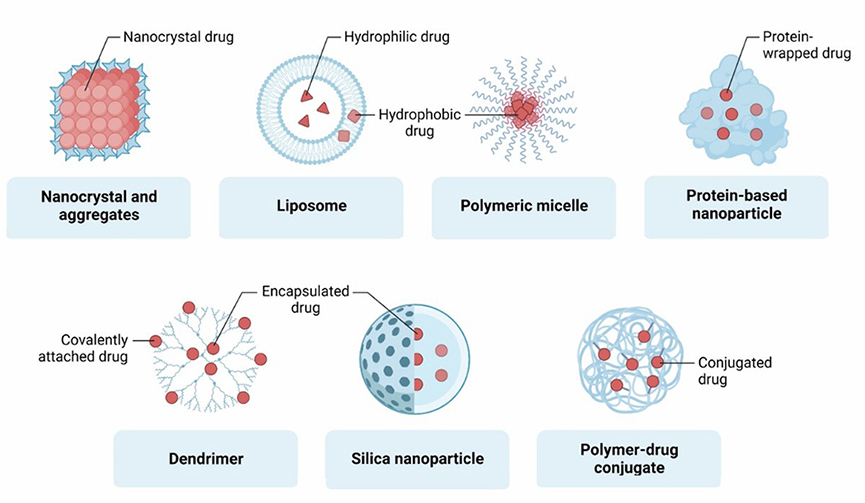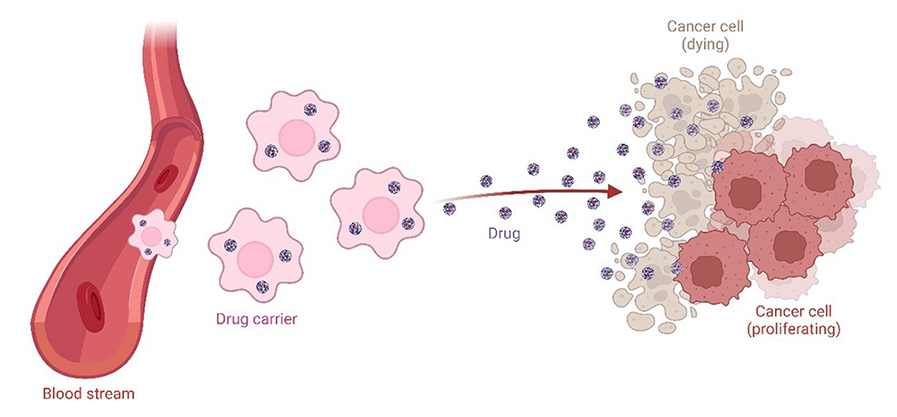Introduction
In recent years, the vigorous development of nanotechnology, especially the emergence of new nanomaterials, has provided new ideas and methods for the treatment of many major diseases. Compared with traditional drug delivery systems, nano-drug carriers can effectively improve the pharmacokinetic and pharmacodynamic properties of drugs and improve their efficacy due to their particularity in size, shape, and material.
These drug delivery carriers with particle sizes in the nanoscale range can be collectively referred to as nano drug delivery systems. The development of nano drug delivery system has become a routine technology to study the activity of drugs in vivo and in vitro. Nano drug delivery systems often become one of the solutions when encountering problems such as large molecular weight, poor stability, difficult absorption, and need for targeted or controlled release. Using nanotechnology, the following goals can be achieved: 1. Enhanced delivery of poorly soluble drugs; 2. Cell or tissue-specific targeting; 3. Transcellular drug delivery across tight epithelial or endothelial barriers;4. Delivery of macromolecules into cells; 5. Simultaneous delivery of two or more drugs to the site of action to achieve combined therapy; 6. Simultaneous delivery of therapeutic drugs and diagnostic drugs to achieve visualization of drug treatment; 7. Real-time reading of the in vivo effects of therapeutic drugs.
Classification of Nanocarrier Materials
Since the FDA issued a series of guidance documents on products using nanotechnology, nanomaterials have officially entered the field of drug delivery. As we all know, nanomaterials are particles smaller than 100 nm in size or materials smaller than 1μm in size but exhibiting nanoparticle properties. Nanomaterial structural units are generally smaller than cells, so they can have quantum size effects, small size effects, surface and interface effects, and macroscopic quantum tunneling effects, thereby exhibiting unique functions and properties. Nanomaterials currently used in drug delivery can be divided into organic nanomaterials, inorganic nanomaterials, biological nanomaterials and composite nanomaterials according to their material composition.

Figure 1. Nanoscale Delivery Approaches for Small-Molecule Cargoes.
Organic Nanomaterials
Lipid nanomaterials, polymer nanomaterials, cellulose, chitosan, hyaluronic acid, etc. all belong to the category of organic nanomaterials, which can be used to make drug carriers such as liposomes, nanoemulsions, solid lipid nanoparticles, polymer micelles, and polymer nanogels. Drug carriers prepared from organic nanomaterials have the advantages of high biocompatibility, good targeting, low toxicity, and good multi-drug loading. Among them, the research on liposomes as drug carriers started earlier, and now a large number of studies have been accumulated. Experience and clinical trial data, and there are many related products on the market, such as doxorubicin hydrochloride liposome injection (Doxil), amphotericin B liposome lyophilized powder for injection, (Ambisome), akamicin lipid Plastid inhalation suspension (Arikayce), paclitaxel liposome for injection (Lipusin), etc..
Inorganic Nanomaterials
Compared with organic nanomaterials, inorganic nanomaterials can be described as a rising star in the field of biomedicine. They have the advantages of simple preparation, good shape and size controllability, and easy surface modification. The unique optical, electrical, and magnetic properties of the material endow it with potential imaging development, targeted delivery, and synergistic drug therapy. Commonly used inorganic nanomaterials include carbon nanomaterials, silica nanoparticles, calcium nanomaterials, gold nanoparticles, magnetic nanoparticles, upconversion nanoparticles and quantum dots. At present, related products based on inorganic nanomaterials have entered clinical trials.
Bio-nanomaterials
Many physiological phenomena and diseases of the human body occur at the nanometer level. As the bearer of life activities and nucleic acid as the carrier of genetic information, they undertake most of the physiological activities in the body and are ideal natural drug carrier materials. With the vigorous development of the field of bioomics, more researchers have turned their attention to bio-nanomaterials with good biocompatibility, easy degradation, high safety, and certain targeting functions. Biological nanomaterials include endogenous natural nanomaterials and biomimetic nanomaterials, such as lipoproteins, exosomes, virus particle and DNA nanomaterials. The lipoprotein nano-drug delivery system is a drug-carrier integrated delivery system formed based on lipid metabolism and transport functions and amphiphilic structure, and some products have entered the clinical stage.
Composite Nanomaterials
Composite nanomaterials (or organic-inorganic hybrid nanomaterials) prepared based on the advantages of the above organic nanomaterials and inorganic nanomaterials have also become the focus of many researches, such as the use of organic materials to modify inorganic nanomaterials, in order to improve its physicochemical properties and in vivo kinetic behavior, or introduce inorganic metal nanomaterials into lipid or polymer nanomaterials to prepare multifunctional nanosystems containing both contrast agents and drugs to achieve integration.

Figure 2. Cell-Mediated Drug Delivery for Cancer Treatment.
In short, understanding and applying nanotechnology in drug R&D provides new ideas for drug R&D. In order to facilitate everyone's understanding of the application of nanotechnology in drug delivery, we have compiled nanotechnology related materials for drug delivery. We will display the relevant information of nano-drug delivery in this section, including: the carrier of the nano-drug delivery system, the delivery molecule, the delivery method, applications and other.
1. Download the template.
2. Enter product information on the template (maximum number of products: 200).
3. Load the file using selector below.
1. Download the template.
2. Enter product information on the template (maximum number of products: 200).
3. Load the file using selector below.